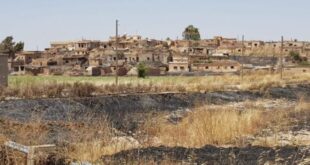BANDA ACEH-Indonesia-Reuters
Some 150,000 people are now known to have been killed by Asia’s tsunami, U.N.
officials said on Monday, as helicopters and elephants were used to find and feed survivors and shift the rubble of razed towns.
Aid workers struggled to help thousands huddled in makeshift camps on Indonesia’s northern Sumatra island, where the tsunami claimed two-thirds of its victims eight days ago, and to reach remote areas after roads and airstrips were washed away.
Half a world away from the changed map of South Asia, President Bush and two predecessors, his father George and Bill Clinton, urged Americans to give money to ward off hunger and disease in the 13 countries hit by the killer waves.
“The current death toll … what we operate with are the confirmed people who are identified as dead … is around 150,000,” said U.N. Emergency Relief Coordinator Jan Egeland.
“There are many, many more who have disappeared or who are missing or who are for us nameless as of this stage. And it is particularly in the Sumatra coast.”
U.S. helicopters began shuttling injured refugees, many of them children, out of some of the worst hit parts of Indonesia’s Aceh province, where many towns and villages were wiped out.
Pilots described columns of refugees trudging up the coast toward the provincial capital Banda Aceh. Some charged the helicopters to fight each other for the food.
“All the villagers started coming out of the woodwork, telling us they needed help. They said there were a lot more wounded people further inland up in the mountains,” Lieutenant-Commander Joel Moss said from the aircraft carrier Abraham Lincoln.
Amid the struggle to stay alive, few survivors of the Dec. 26 disaster forgot their appalling grief and losses.
“I thought that my two sons were my future. With them I could build this family,” said 22-year-old Shiva Shankari, choking back tears at a refugee camp on India’s east coast.
While her daughter survived the tsunami, the sons aged three and five that she and her sister struggled to save both died.
By Tomi Soetjipto and Dean Yates
3-1-2005
ܢܗܪܝܐ
 Assyrian Democratic Organization ADO
Assyrian Democratic Organization ADO






